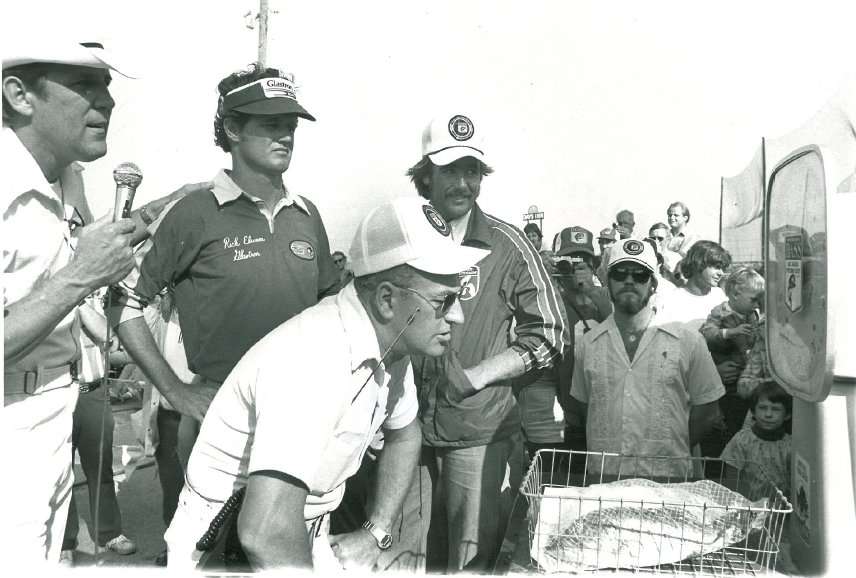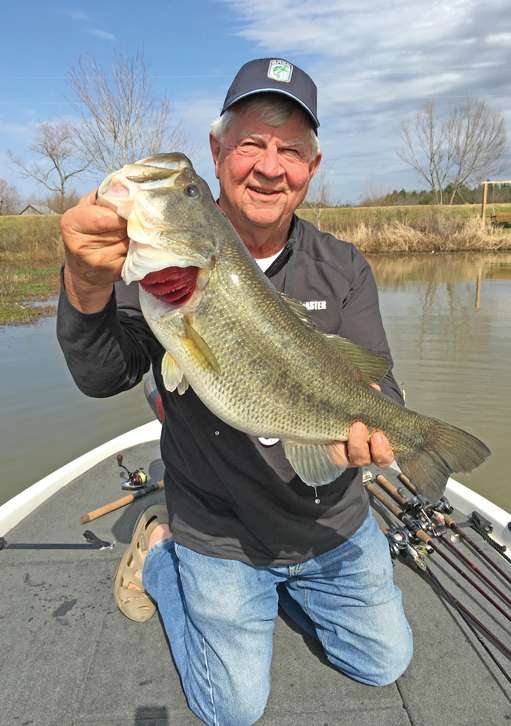
Most B.A.S.S. members won’t remember 1968 because they hadn’t been born by that time. Trust me — or look it up — it was a tumultuous year.
Civil rights leader Martin Luther King Jr. and presidential candidate Robert F. Kennedy were assassinated that year. The Vietnam War was going badly, and the anti-war movement was approaching its peak.
While the protest counterculture was taking over big cities and college campuses, a subculture sprang up in the Deep South.
That subculture was built around the black bass. This month, 45 years ago, B.A.S.S. was born. It had been conceived a year earlier, when Ray Scott began planning the first All American Bass Tournament on Beaver Lake, Ark., and it formally came into being when Don Butler paid Scott $100 to become the first member of the Bass Anglers Sportsman Society. Butler, a lure maker and ambassador for bass fishing in the Tulsa, Okla., area, also became the first lifetime member and the first recipient of Bassmaster Magazine, as Scott recalled it.
I doubt either man fully appreciated the impact that act would have on outdoor sportsmen — and the outdoors itself — in the decades to come. Scott has told me he was mainly focused on paying the bills that were piling up at the time, and Butler was quick to devote his energy and money to a cause that interested him.
Whatever they were thinking that winter day, it turned out to be a watershed event. The founding of B.A.S.S. brought fulfillment to generations of people who were inspired to join the bass fishing movement. It’s made millionaires of some, and it has enriched the lives of millions of others in less tangible ways.
What began 45 years ago was the catalyst for an entire industry that has been valued at $25 billion, give or take. Think about it: What would boats, outboards, electronics, lures, lines, tow vehicles, rods, reels and tackleboxes be like if bass fishing had remained a pastime instead of becoming a nationwide passion?
I’m old enough to remember bass fishing prior to B.A.S.S. I kept a 3-horsepower outboard in my room at college and rented johnboats to hang it on. That, a paddle, a rod and reel and a small box of lures completed my armory. I’m looking at a photo of tournament boats from the late ’60s, and I see an array of johnboats, fiberglass tri-hulls and dugouts and even a V-hull made of plywood.
There’s no doubt marine electronics, tackle, boats and lures would have developed and evolved without the advent of B.A.S.S. But their advancement was spurred and shaped by tournament competition, which rewarded any edge, technological or otherwise, that could be gained.
B.A.S.S. tournaments did for fishing what NASCAR did for automotive engine design and what the space program did for a whole array of consumer items.
In a few weeks, Feb. 22-24, we’ll celebrate the 43rd Bassmaster Classic when more than 100,000 fishing fans are expected to converge on Tulsa, Okla., to sit in the state-of-the-art BOK Center and watch 53 men in logo-adorned jerseys hand bags of bass to the weighmaster. They’ll pack the Tulsa Convention Center for three days to visit the more than 170 exhibitors, and many who enter the Expo doors will leave with stuffed shopping bags.
But bass fishing is about much more than merchandise. What’s also changed in the past 45 years is the quality of fishing. Anglers are catching more bass, and there are more to be caught, thanks to clean water, catch and release, wise management and other aspects of conservation. And all those have been impacted, if not initiated, by B.A.S.S.
Admittedly, our organization didn’t accomplish all these things singlehandedly. Other companies and organizations and visionaries that have come along since its founding have had tremendous and defining influences as well. That’s the way snowballing works.
But clearly, the movement begun in January 1968 has proved to be more than a passing fancy. B.A.S.S. has grown from a wild idea and a handful of true believers to an organization with more than 500,000 members worldwide and magazines read by 4.3 million people a month.
It’s a birthday worth celebrating.

